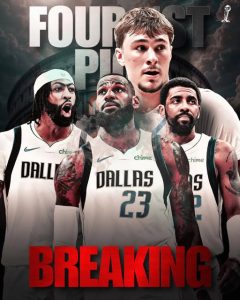
When the University of Miami announced the acquisition of quarterback Carson Beck, excitement rippled through the Hurricanes’ fan base. A talented signal-caller with a promising track record, Beck’s transfer to Miami came with significant expectations. More notably, he inked a staggering $4.5 million Name, Image, and Likeness (NIL) deal, one of the largest in college football this offseason. But with this kind of financial commitment comes scrutiny. Recently, an ACC coach publicly expressed doubts about whether Beck can justify such a monumental NIL contract, igniting debate about the pressures and expectations on high-profile transfers and the evolving college football landscape.
Carson Beck, who began his collegiate career at the University of Georgia, has demonstrated flashes of elite potential during his tenure in the SEC. As a freshman, Beck showed a poise beyond his years, managing games effectively and displaying a strong arm and good decision-making skills. However, his time at Georgia was marked by ups and downs, including limited playing opportunities behind established starters and inconsistent performances when given the chance. Seeking a fresh start and a bigger role, Beck transferred to Miami, where he is expected to become the face of the Hurricanes’ offense.
The $4.5 million NIL deal Beck secured through partnerships with major brands and endorsements signals the new era of college athletics, where top-tier players can capitalize financially without leaving school for the pros. It’s a remarkable milestone for a quarterback with only moderate collegiate experience and yet to fully prove himself as a consistent starter. Such an investment from sponsors indicates confidence not just in Beck’s on-field potential but also in his marketability and appeal to fans and consumers. But therein lies the rub: can Beck live up to the hype on the field to justify the money?
An ACC coach, who spoke on condition of anonymity, voiced skepticism. According to this coach, Beck’s NIL deal feels premature given his uneven track record and the fact that he has yet to establish himself as a dominant presence at the collegiate level. “There’s no doubt Beck is talented,” the coach remarked, “but $4.5 million is a serious commitment. At Miami, the expectations will be sky-high. The question is, can he consistently perform at the level required to justify those dollars? The ACC is a competitive conference, and Miami is aiming to get back to national prominence. If Beck struggles, it could put a lot of pressure on the program and his sponsors.”
This viewpoint captures a growing tension in college sports today. NIL deals have introduced a new dynamic where athletes, especially those in high-profile positions like quarterback, must not only prove their worth on the field but also maintain a personal brand off the field to keep endorsements. For Carson Beck, this means the spotlight is brighter than ever. Miami’s fan base and the broader college football world will be watching closely, expecting Beck to elevate his game and lead the Hurricanes to victories.
Miami’s football program has experienced ups and downs over the last decade. Once a dominant force in college football, the Hurricanes have struggled to maintain consistent elite performance in recent years. The addition of Beck represents a strategic move to reignite the program’s competitive fire. Head coach Mario Cristobal has spoken highly of Beck’s abilities and leadership qualities, emphasizing the quarterback’s potential to elevate the team. However, Cristobal himself has acknowledged the challenges Beck faces in adapting to a new system and conference.
Adjusting to the ACC from the SEC is not a trivial matter. The ACC presents its own unique brand of football, with a blend of physicality and speed that demands quick decision-making and resilience from quarterbacks. Beck’s experience in the SEC, widely regarded as the toughest conference in college football, certainly provides a solid foundation, but adaptation will be critical. Miami’s offense under Cristobal is dynamic and aggressive, requiring Beck to manage pressure and make quick reads against diverse defensive schemes.
Beyond the physical and tactical demands, the psychological burden of living up to a $4.5 million NIL deal cannot be overstated. Beck must balance performance expectations with the demands of his newfound celebrity status. NIL contracts often come with promotional obligations, appearances, and the need to maintain a marketable image. The pressure to succeed both on and off the field can be daunting for any college athlete, especially one under the microscope like Beck.
Critics argue that such large NIL deals can create unrealistic expectations that add undue stress on young players. They warn that when athletes are valued in the millions before proving themselves fully, it can distort the development process and invite harsh criticism if performance falls short. Beck’s case is emblematic of this dilemma. On one hand, the NIL deal rewards his potential and marketability; on the other, it places a target on his back and raises questions about whether the hype may outpace the reality of his abilities.
Supporters of Beck counter that the quarterback has shown enough promise and skill to merit the investment. They point to his strong arm, mobility, and leadership traits as indicators that he can thrive at Miami. His work ethic and determination to improve have been praised by coaches and teammates alike. Moreover, they argue that NIL deals reflect market forces and fan interest — if Beck has the charisma and appeal to attract millions in endorsements, that’s a valuable asset that transcends on-field performance alone.
The broader conversation around NIL deals and player compensation in college sports remains heated and evolving. While many celebrate the opportunities for athletes to profit from their talents and personal brands, others worry about the consequences for competitive balance and team dynamics. For Miami and Beck, the stakes are particularly high because the financial commitment is among the most substantial in the ACC and college football generally.
As the 2025 season approaches, all eyes will be on Carson Beck. Fans, coaches, sponsors, and media will be evaluating his every throw, his leadership in the huddle, and his ability to elevate Miami’s offense. If Beck can deliver consistent performances, lead the Hurricanes to victories, and keep his off-field obligations in balance, he will silence critics and justify his $4.5 million NIL deal. On the flip side, any struggles or setbacks could fuel doubt and criticism, potentially jeopardizing his standing with Miami and endorsement partners.
In many ways, Beck’s journey at Miami symbolizes the evolving intersection of college football, NIL economics, and athlete expectations. His story will be watched as a test case for how high-profile transfers and big-money NIL deals play out in the modern game. Beyond the statistics and game results, it’s a narrative about pressure, opportunity, and the challenges young athletes face in an era where fame and fortune come early.
The ACC coach’s doubts highlight the reality that not every talented player will seamlessly translate NIL dollars into on-field success. But they also underscore the potential reward if Beck can harness his skills and rise to the occasion. Miami’s Hurricanes are banking on that outcome, hoping Beck will lead them back to championship contention and prove that investing heavily in a quarterback with a major NIL deal can pay dividends.
As Carson Beck steps onto the field in Miami orange, the question remains: can he justify the $4.5 million NIL deal with the kind of play that Miami fans crave? The answer will unfold over the course of the season, in every drive, every touchdown, and every moment under pressure. For Beck and the Hurricanes, the stakes have never been higher.





